 The first month of Spring is approaching us in fast pace – we long for those brighter days and we look forward to be able to go outside without wearing hundred layers of clothing. A lot of shops, webshops and fashion enthusiasts in general have also begun to update their wardrobe so that it’s ready for the warmer and brighter days. That goes for me, too. It may be tempting for many people to start the season with a clean slate at this time of the year, and especially in the influencer world “wardrobe clearouts” are quite the thing when a new season is upon us (especially spring is a classic season to start fresh) and this time is no exception. There is nothing wrong with a thorough cleanup in the wardrobe or in the home in general; maybe you want more quality worked into your wardrobe, make better financial choices, really find your style, take more sustainable choices and stop buying clothes and things that don’t add any real value to your life. When you clean up your wardrobe in this way, you probably end up with a pile of clothing that doesn’t add any real value and therefore there is no reason to hold on to it. Some items may be great for selling because they are of higher quality, but some will probably end in the donation pile.
The first month of Spring is approaching us in fast pace – we long for those brighter days and we look forward to be able to go outside without wearing hundred layers of clothing. A lot of shops, webshops and fashion enthusiasts in general have also begun to update their wardrobe so that it’s ready for the warmer and brighter days. That goes for me, too. It may be tempting for many people to start the season with a clean slate at this time of the year, and especially in the influencer world “wardrobe clearouts” are quite the thing when a new season is upon us (especially spring is a classic season to start fresh) and this time is no exception. There is nothing wrong with a thorough cleanup in the wardrobe or in the home in general; maybe you want more quality worked into your wardrobe, make better financial choices, really find your style, take more sustainable choices and stop buying clothes and things that don’t add any real value to your life. When you clean up your wardrobe in this way, you probably end up with a pile of clothing that doesn’t add any real value and therefore there is no reason to hold on to it. Some items may be great for selling because they are of higher quality, but some will probably end in the donation pile.
Kalenderen skriver snart officielt forår; marts måned nærmer sig med hastige skridt, og vi længes efter forår, lysere tider og vi ser frem til at smide nogle af de mange lag tøj, som vinteren påkræver os. Rigtig mange butikker, webshops og modeinteresserede generelt er også begyndt at længes efter, at få opdateret garderoben så den er klar til de lunere og lysere dage. Det gælder også mig. Det kan være fristende for mange, at starte på en frisk på denne tid af året, og især i influencer verdenen er “wardrobe clearouts” det helt store når et stort sæsonskifte er over os (især forår er en klassisk sæson at starte på en frisk), og denne gang er ingen undtagelse. Der er overhovedet ikke noget galt med en grundig oprydning i garderoben eller i hjemmet generelt; måske vil man have mere kvalitet arbejdet ind i sin garderobe, tage bedre økonomiske valg, virkelig finde sin stil, tage flere bæredygtige valg og holde op med, at købe tøj og ting der ikke tilfører nogen rigtig værdi til sit liv. Når man rydder op i sin garderobe på denne måde, så ender man højst sandsynligt med en bunke tøj, der ikke tilfører nogen rigtig værdi, og derfor er der ingen grund til, at holde fast i det. Noget kan måske sælges videre, men en del vil sikkert også ende i donationsbunken.

“Closing the loop”
What happens to the clothes we donate? I’m far from being an expert in this field to be able to give the full answer – but if you have seen the documentary The True Cost which evolves around the consequences of the fast-fashion industry, you know that a lot of recycled clothing from the Western world puts out local production, simply because the amount of clothing we donate is too much for the third world countries to be able to keep their own production going too. And we’re talking huge piles of clothing, that are just laying there. This article describes how the population’s employment in Ghana has fallen by as much as 80% between 1975-2000 as a result of this scenario. In addition, the same article indicates how the recycling system is actually built (it should be said that it is based on recycled clothing from the UK, US and Canada countries). I think many people have som sort of idea that when donating a piece of clothing, it will either be sold in a thrift store or recycled 1:1, such as through H&M’s recycle program where you can, as you may know, hand over old clothes and in return, receive a 20% discount card for shopping for new items. “Close the loop” they call the concept. And it can be said that they are largely closing the loop of recycling – they help prevent a lot of clothing from ending in landfill and instead reusing most of it. But again, there is not much transparency about what really happens to the clothes we donate, and that’s not just looking at H&M. This also applies to other brands and recycling concepts worldwide. A lot of the clothes we donate end up as filling in pillows, sofas, teddy bears, as blankets, rugs or other textiles. And again, I don’t think there is something wrong with this scenario. But your old clothes just may not be recycled 1:1 into new clothes as you would believe; instead, your old clothes becomes a coveted and valuable commodity. And the clothing that is being shipped of to people who lives in poverty is just piling up. Sure, it doesn’t end up directly on landfill – but if the locals can’t follow the huges amounts of clothing from the Western countries then what is the point exactly??
Hvad sker der egentlig med det tøj vi donerer? Det er jeg langt fra ekspert nok på området til, at kunne give de fulde svar på – men hvis man har set dokumentaren The true Cost der netop handler om konsekvenserne af fast fashion branchen så ved man, at meget genbrugstøj fra vesten sætter lokal tøjproduktion ud, simpelthen fordi de mængder tøj vesten donerer er for store til, at det kan betale sig for dem selv at producere. Denne artikel beskriver bl.a. hvordan befolkningens beskæftigelse i Ghana er faldet med hele 80% mellem år 1975-2000 som følge af dette scenarie. Vi snakker stakkevis af uanede mængder tøj, som bare ligger der. Desuden tilkendegiver samme artikel, hvordan genbrugsystemet faktisk er opbygget (det skal dog lige siges, at den tager udgangspunkt i genbrugstøj fra landene UK, USA og Canada). Jeg tror mange mennesker ret uvidende har en forestilling om, at når de donerer et stykke tøj så bliver det enten solgt i en genbrugsbutik eller genanvendt 1:1, som fx gennem H&M’s recycle program hvor man som bekendt kan aflevere gammelt tøj og til gengæld modtage et rabatkort på 20% til shopping af nye items. “Close the loop” brander H&M deres koncept på. Og man kan sige at det gør de i høj grad også- lukker genbrugscirklen – de er med til at forhindre rigtig meget tøj i, at ende på lossepladsen og i stedet genanvende det meste af det. Men igen er der ikke ret meget gennemsigtighed omkring, hvad der egentlig sker med det tøj vi donerer, og det gælder ikke kun H&M. Det gælder også andre brands og genbrugskoncepter verden over. Rigtig meget af det tøj vi donerer ender som fyld i puder, sofaer, bamser, som tæpper, klude eller andre tekstiler. Og igen, så synes jeg ikke som sådan der er noget i vejen med dette scenarie. Men det bliver netop ikke genanvendt 1:1 som nyt tøj som mange går og tror; i stedet bliver det til en eftertragtet og værdifuld handelsvare. Johanne fra Bedre Mode har skrevet et meget informativt lignende indlæg, netop omhandlende hvad der sker med det tøj vi donerer lige HER. Og det tøj der så rent faktisk bliver sendt til andre lande med det formål, at sælge det billigere til mennesker der ikke er ligeså velstillede som os i vesten hober sig op. Jo vidst ender det ikke direkte på lossepladsen, men hvis de lokale ikke kan følge med, er det så ikke næsten det samme??
Find the infographic “The life cycle of secondhand clothing” HERE
“Reduce, reuse, recycle”
The above has a little become my mantra. It’s quite simple the 3 most important pillars in terms of sustainability, and in my opinion, all 3 words have to be part of the bigger picture if we ever want to close the loop. Unfortunately as consumers, we are far from being encouraged to “reduce”. On the contrary, the fashion industry constantly strives to make us feel that we are missing something. In a perfect world, I think the fashion industry could do more in order to help us to exchange old clothes with each other 1:1. Just be more innovative, you know. So we can ease the pressure on both the people in the industry and not least our environment. I refuse to believe that so much of the clothing that is transformed into other fabrics than clothing, has no more life in itself as it already is. How many of us have not tried donating clothes that we may have used only a couple of times? I have at least. Nowadays however, I go more for timeless items of good quality, so that I’m sure I can sell them if I’m doing a wardrobe clearout. In addition, I also think it’s a little scary how much clothes are being donated if you look at how common it is to buy secondhand clothes. The truth is that many people (especially in the western world) are so well-offed that it makes more sense to just buy new items. Why in the world would you buy something used when you can get something that’s brand new for only a bit more money? Personally secondhand clothes are often my first choice because it doesn’t put the environment under extra pressure. I buy something that has already been produced and I support recycling concepts in general, which is something that means a lot to me personally and it just aligns with my own values. But that doesn’t mean that I can’t easily understand the other way of thinking. I just think it’s a shame that so much unused clothing have to be turned into pillows when you think about how many people that are under pressure in the production of them, not to mention our environment. It’s just kind of a waste, even though I know the textiles aren’t initially being wasted. But still. It’s a complex business and I don’t know the answers to how we solve it. In all its simplicity, I think that many of the answers are within quality rather than quantity, which is one of the reasons I’m so fond of my capsule wardrobes for example. The more we as consumers are willing to pay for our garments, the more space there would be for fair wages not to mention the general support of more eco-friendly production.
What are your thoughts on this? Did you know in advance where the clothes you donate end up? And are you going to look differently on your consumption and what you donate in the future? Personally it is definitely something I’ll think more about in the future, but as the article mentioned earlier in this post says, it is still good that we donate – there just needs to be much more transparency about it.
Ovenstående er lidt blevet mit mantra. Det er ret simpelt de 3 allervigtigste grundpiller i forhold til bæredygtighed, og i min optik er alle 3 ord nødt til at være en del af det store puslespil, hvis vi nogensinde skal “close the loop”. Desværre bliver vi jo som forbrugere langt fra opfordret til, at “reduce”. Tværtimod får fast fashion industrien os konstant til at føle, at vi mangler noget. I en perfekt verden, så synes jeg modebranchen burde gøre mere for, at vi som forbrugere kunne bytte gammelt tøj med hinanden, eller på andre mere innovative måder virkelig hjælpe os forbrugere med, at genanvende gammelt tøj 1:1, så vi kan lette presset på både menneskerne i industrien og ikke mindst vores miljø. For jeg nægter simpelthen at tro på, at så meget af det tøj der bliver omdannet til andre tekstiler end beklædning, ikke har mere liv tilbage i sig som det allerede er. Hvor mange af os har ikke prøvet, at donere tøj som vi måske kun har brugt et par gange? Jeg har ihvertfald. Nu går jeg dog i højere grad efter tidløse items i god kvalitet, som jeg er sikker på jeg kan sælge videre 1:1. Desuden synes jeg også det er lidt tankevækkende hvor meget tøj der bliver doneret, hvis man sætter det op imod, hvor almindeligt det er, rent faktisk at købe brugt tøj. For sandheden er, at mange mennesker (især i den vestlige verden) er så velstillede, at det ligeså godt kan betale sig, at købe tøjet fra ny. Hvorfor i alverden købe en anden persons aflagte ting, når man kan få noget der er spritnyt? Ret simpelt, så er brugt tøj mit første valg fordi det ikke sætter miljøet under ekstra pres. Jeg køber noget der allerede er produceret, og jeg støtter genbrugskoncepter generelt, hvilket er noget der betyder meget for mig personligt, og det er noget jeg gerne vil være med til, at normalisere. Men det betyder ikke, at jeg ikke sagtens kan forstå den anden tankegang. Jeg synes bare det er ærgerligt at så meget stort set ubrugt tøj, må lade livet som fyld i bl.a. puder, når man tænker på hvor mange mennesker der er under pres i produktionen af det, for slet ikke at tale om vores miljø. Det er en kompleks branche, og jeg kender ikke svarene på, hvordan vi løser den. I alt sin enkelthed så tror jeg, at mange af svarene ligger i kvalitet frem for kvantitet, hvilket er én af grundene til, jeg er så glad for mine capsule wardrobes. Jo mere vi som forbrugere er villige til at betale for vores tøj, des mere rum bliver der til ordentlige arbejdsforhold og generel opbakning af mere bæredygtig produktion.
Hvilke tanker sidder du derude tilbage med? Vidste du på forhånd, hvor det tøj du donerer ender? Og vil du se anderledes på dit forbrug og det du donerer fremadrettet? Personligt er det ihvertfald noget jeg vil tænke mere over i fremtiden, men som artiklen nævnt tidligere i indlægget peger på, så er det stadig grundlæggende godt, at vi donerer. Der skal bare være meget mere transparens.
![]()



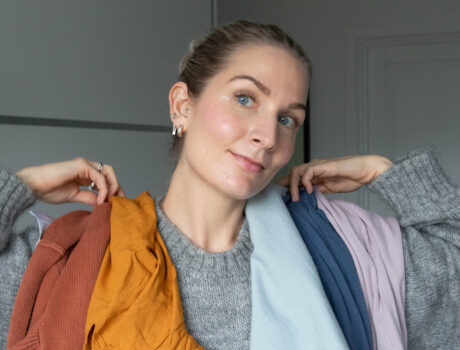

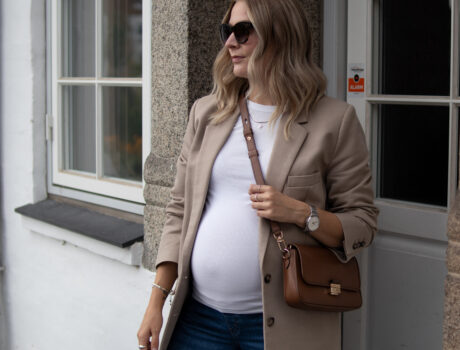
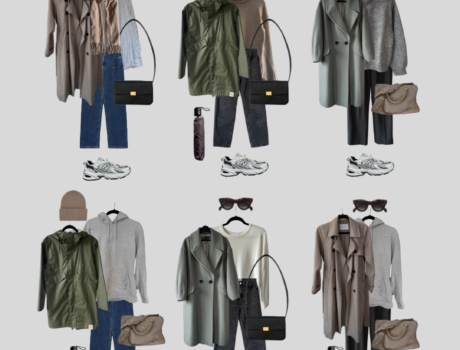
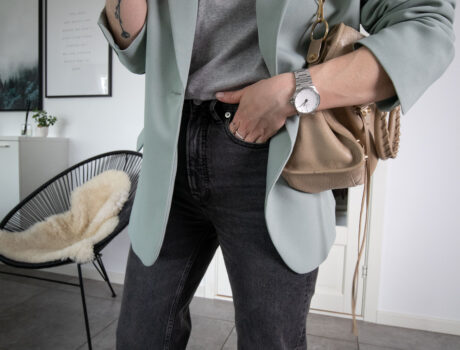
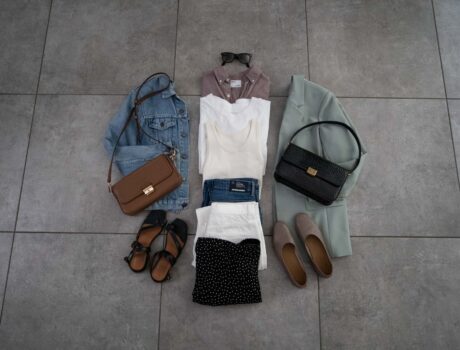

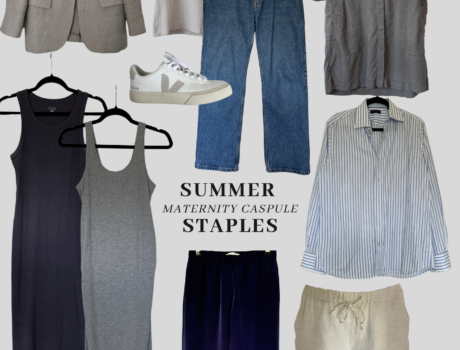
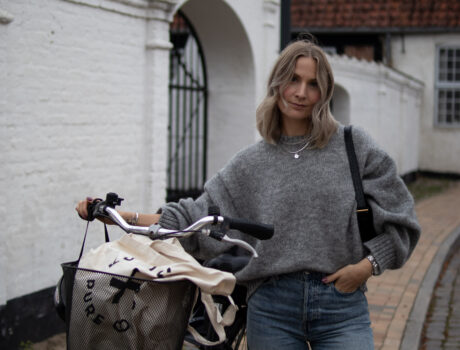
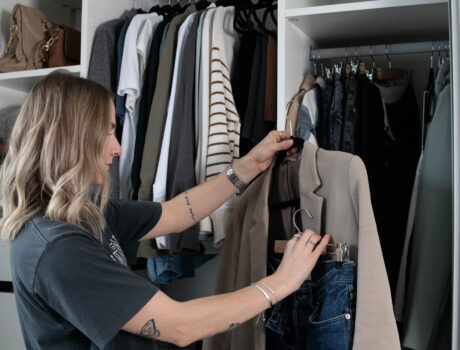


Tak for et godt indlæg! ?? Jeg forholder mig præcist som du, og køber genbrug og kvalitetsvarer, der har lang levetid + kan tåle at skifte ejer undervejs, hvis det skulle blive nødvendigt ? Jeg opererer med en ganske lille garderobe, og mit tøj rammer først containeren, hvis/når det er slidt fuldstændigt op. Tøj, der stadig kan bruges, sælger jeg, giver jeg bort eller indleverer jeg direkte til en genbrugsbutik ?
Kh T
(@tanjagotthardsen)
Tak for din dejlige kommentar Tanja! Jeg har faktisk ikke rigtig prøvet at praktisere det med, at aflevere tøjet direkte i en butik – ved du om man kan det i alle genbrugsbutikker? 🙂 Så er man måske mere sikker på, at tøj der er i god stand rent faktisk bliver solgt videre.
Hello Signe, I’m writing for the first time on your blog because among all the topics on your blog it’s certainly the one that touches me the most! First of all, I would like to tell you how much your comments and ideas nourish my personal reflection on consumption in general and my lifestyle. I live in Quebec and textile recycling is the least important concern for the responsible authorities and the general public. There are, of course, many organisms that recover clothes and give them a second life. However, how many times do I see bags full of garments in the garbage cans and what can I say about shoes!!!! Just like compostable and recyclable waste, we should be able to put all the textiles… not only clothes but also old towels, rags, shoes, etc…. Thank you for your wonderful post! Have a beautiful week!
Dear Clara! Thank you so much for commenting on this post, especially considering you don’t comment that often. I’m glad you did! I agree with you on this topic. It’s crazy how many people are actually in general concerned about our environment, but when it comes to fashion and textiles those same people are wildly ignorant. We need more knowledge about this industry!
I recently watched a 20-minute news magazine story from Canada’s network CBC called “How fast fashion adds to the world’s clothing waste problem” and what really appalled me was how many Canadians think they are doing something that is undeniably ‘good’ by donating their old clothes to H&M and other programs. It’s much more complex than that, as you point out. One of the challenges I find in attempting to buy 2nd hand is this: more and more, the clothes being donated are from fast fashion. So whereas when I was in college i could get 2nd hand clothes that were excellent quality, or when i shopped in San Francisco at a great store a few years ago I came up with some FANTASTIC items, (like a lined shantung silk sheath dress from the 60’s, gorgeous!), it’s harder to find decent quality items at local 2nd hand stores in Western Canada. Because they are all coming from Zara, H&M, Le Chateau, etc. Thanks for raising awareness around this Signe.
Oh I dread how our secondhand shops will look in the future! Because as you say, they are being taken over by the fast fashion industry. 🙁 thanks for your comment! SO glad you liked this post <3
Hello. I am from France. In France there is an éco tax to help for the recycling phase of a garnment, maybe it’s a european thing (?). Have you heard of the fraud of this eco tax?
Thank you for your interesting content.
Hi Signe. Thanks for this interesting post. I have recently returned from living in East Africa and want to offer an alternative viewpoint on the supply of 2nd hand clothes. Tanzania is a very poor country. Supplies of decent second hand clothes enable very poor people to dress and feel stylish, like the people they see in music videos. Those people would simply not be able to afford the price of new clothing made by often very inefficient local factories. The more select items go to the emerging middle class and again allow people to feel stylish and up to the minute for relatively little layout. I am all for supporting local businesses and there are questionable aspects to this trade but I think in this case it’s best to let the market decide. I agree strongly that fast fashion is not a sustainable choice but having experienced this at first hand would now be more happy than before to see items of mine passed on in this way.
PS: It is an over-simplification to suggest that local production failed in countries like Ghana because of this trade. The factories faced many challenges and it could equally be argued that the market filled an emerging gap – that is responded to the failure rather than causing it.
Hi Signe, First time commenter to your blog, which I found through your youtube channel. Thank you for this topic. In the US there are clothing donation bins on street corners (Planet Aid, etc) where you can donate large amounts of clothes, and I have done that before, without thinking about what happens after. I will reconsider more carefully in the future where I donate clothes. I also buy and sell through second hand websites for clothing. This is less “green” than going to a local thrift store, since it’s being mailed back & forth, increasing the carbon footprint. Recently, I’m focusing on specific brands that are transparent about their sustainability practices and how they make their clothing, and getting new pieces on occasion as my budget allows (to support the brand) and also finding them used. But as another commenter said, more and more you find fast fashion brands dominating these sites. I will say for old towels and bedding, you can donate those to the local animal shelter. Yes, they will also eventually be thrown away, but not before they are used to threads.
Here are some of my thoughts and experiences on how to handle my children’s clothes.
When I do the big clearout twice a year I make 3 piles of the clothes that don’t fit. First pile is for friends kids who are younger/smaller. These are clothes in good enough condition that they will get another couple of kids through them. I try to donate to families who really need the clothes so they definitely get used. Second pile is for donating to local charity shops. These are clothes that are still functional but not nice enough for friends. Third pile is the really worn out clothing that is badly stained. This pile goes to my husbands rag bucket for the Garage. Bags of rags are actually really expensive to buy so by providing rags for him I save us money and increase the quality of what I donate. I try to donate only what I would potentially buy if I was in a charity shop (or Opportunity Shop as we call them in Australia). As other posters have commented the quality of second hand clothing has really deteriorated.
For myself, I’m looking to upcycle more clothing. I sew skirts and shirts for myself and buying brand new fabric isn’t always going to be the most environmentally friendly practice either especially as sewing can be split into 2 hobbies, first collecting fabric and notions, second sewing the fabric. I’m becoming really strict with myself that I have to use from my existing stash and remake some of my old clothes into lining for skirts. I used an old shirt of my dad’s to make a contrast collar and cuff’s for a shirt.
Keep up the conversation Signe, I for one get so much inspiration from you.
Dear Signe
I know the problem of donating in the Netherlands too.
In my village you can donate the cloth, but they sell it in kilo and spent the money for projects in India. That is a beatifull idea. But I was not happy to do this. Because…a Prada, valentino ….skirt sold second hand brings more money…. the kilomprice is very less.
as I lived in an other town i could donate the clothes to an organisation that sels the clothes to very poor people who need the clothes and they can buy them for 1, 2 or 3 euro. This is a very low price but this is a very happy way for me. So I donate my clothes to this organisation.
There is an other organisation that we can donate, they give the clothes to very poor people who are without a job. These Poor people don’t have clothes if they get a job, they need to be dressed up than.! I donate there as well.
These ways gives me the opportunity to spent to people in my own living place to help them.
This way is also “green” because my clothes doesn’t travel to the other site of the world.
Perhaps are these some ideas for your readers. Look arround your enviremont and spent there your expencive clothes.
Sorry for my bad english, it is not my native language❤️?
Don’t worry about your english love, I understan everything you say! And I love that idea of giving old clothes to organizations like that! <3 I think what I'm really mostly frustrated about is this "away" culture that can be in these huge closet clearouts that many especially influencers do every season. I find it so sad that clothes that have been produced with mother earths ressources are getting dumped, often with tags on and everything. That's what I really don't like. But when the donations are being handled really well, that's of course really good! :-*
Hi Signe
To add to the conversation… I live in the US and there are many ways to donate your used clothing and other household items. One is FreeCycle, a web organization that exists in most cities where donors and recipients can connect and find each other. I recently quit my corporate job and wanted to donate my extensive work wardrobe. Through FreeCycle, I found several lovely young women of my size (I’m quite short and small) who came and took my piles of clothing. It was a win-win. They were grateful for the free clothes and I was happy to know my dresses will get a second life. In fact, one of the women later sent me a photo of her engagement in which she’s wearing my dress, which looked absolutely perfect on her. That was so gratifying for me.
There’s also a Facebook group, Buy Nothing, where goods and services are exchanged for free. Of course, we have Goodwill and Salavation Army stores that accept donations. Lastly, it’s become quite popular to hold clothing exchange parties. Basically you and your girlfriends, neighbors, colleagues come together and swap clothes. It’s great fun for a weekend afternoon and everyone gets “new” clothes. I hope this is helpful.